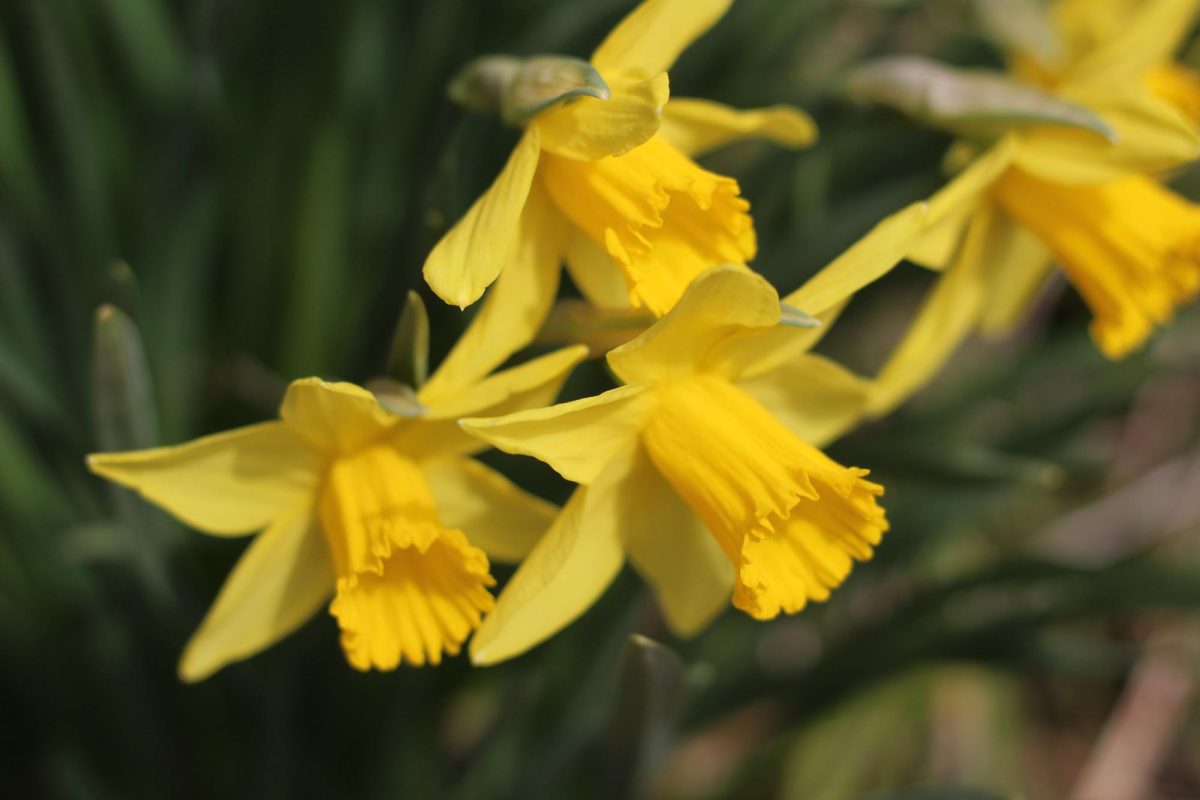Looking through the windows, it would seem almost as if the wintry weather has made its way inside the warm walls of Hampden Gallery in Southwest. To the far away viewer, it looks like columns and walls have been crystallized. However, if a pedestrian were to step inside, they would find out that this exhibit is so much more.
“Swallowed” by Maggie Nowinski is a social commentary in the form of art, calling out society and big businesses for their use and obsession with buying bottled water. If one truly thinks about it, why should bottled water be an acceptable purchase in an economy such as this? Anyone can turn on the nearest tap and obtain all the water they want, so why pay extra?
It was these sorts of questions that inspired Nowinski in 2007 to begin collecting and forming art with empty water bottles that she found in various public places. Water, a most basic need for all humans, is inescapable in everyone’s daily lives.
It can also represent a bond between nature and humans, a bond which Maggie Nowinski, on her website declares to be torn apart by plastic. She says that, “We drink plastic water, part of a system that extends beyond the simple and immediate practice of drinking water.” So she set out to show just how prominent plastic water bottles have become in our culture.
Nowinski’s exhibit features 10,000 – 12,000 empty water bottles of various brands – Dasani, Poland Spring, Crystal Geyser – you name it, it’s in there. They are strung together by thin wires and cascade down from the walls and ceiling, giving an illusion of waterfalls. Also featured are remarkably good-quality pictures snapped from a Motorola Razor cell phone of 219 “water bottles in their natural environments.”
Nearby are large paper drawings of the connected water bottles in black and white. They are made to look blurry, and resemble stalactites one would find in caves. It gives another illusion of the ties water has to nature. These pictures, along with the waterfall-like formations, are featured in the large, main room of the Hampden Gallery.
Also in the large room is a television screen showing a loop of what Nowinski deemed to be a series of “performances.” It is a video of various ways the strings of bottles were gathered and hung from the ceilings and walls of different locales. It also succeeds in not only showing the physical processes, but the creativity and thoughtfulness that went into designing the art and showing the exhibit’s true message.
The display also extends to an unlit back room. That particular part of the exhibit is named “Riverfall,” as it features a smaller set of strung up bottles on a slab of wall, while a projector beams images of running river water through the clear plastic in various colors. According to the wall plaque near the entrance, “each color represents a part of the conceptual dilemmas ‘Swallowed’ attempts to address.” For example, blue signifies the desire for the natural element, and red represents the blood on the hands of the consumers, the collective American society.
This exhibit attempts to show the potential harms of the bottled water industry on the psyche and the environment. Nowinski is able to put forth an important message without coming across as an overbearing environmentalist. With a bit of effort, it is easy to understand where she is coming from.
If the average American thinks of how many bottles of water they consume and toss in the trash in the average month and then considers the implications all of that plastic has on the environment, perhaps a change would come. This is the realization Nowinski is trying to give a key consumer group, college students. According to the artist, consumers simply cannot make drinking bottled water a natural event. The results could be catastrophic to one’s wallet and to the Earth.
“Swallowed” will be on display in Hampden Gallery until Feb. 23. The Gallery is open Monday through Thursday 12-6 p.m and Sunday 2-5 p.m.
Kate MacDonald can be reached at [email protected].


















